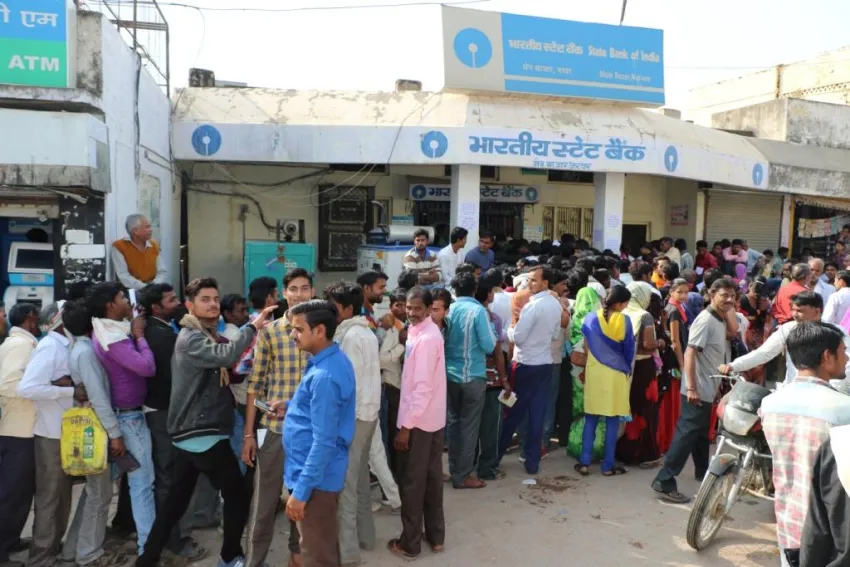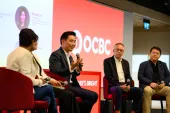
Indian banks' weak capitalisation levels remain a key concern
Some public banks will require external equity capital of up to $14.6b.
Moody's Investors Service says that weak capitalisation levels will remain a key credit weakness for Moody's-rated Indian public-sector banks, particularly in the context of the increasing requirements for equity under Basel III, and the limited ability of the banks to raise external capital.
Moody's Indian affiliate, ICRA Limited, says that the asset quality outlook for the Indian banking sector will remain weak, despite the moderation in the formation rate of fresh nonperforming assets (NPAs).
"In our central scenario, we estimate that the 11 Moody's-rated public sector banks will require external equity capital of about INR700-INR950 billion, or about $10.6-$14.6 billion," says Alka Anbarasu, a Moody's Vice President and Senior Analyst. "Such an amount is much higher than the remaining INR200 billion budgeted by the government towards capital infusion until March 2019."
Here's more from Moody's:
Moody's analysis assumes that the stock of impaired loans will increase during the horizon of this outlook, but at a slower pace versus the last two years. Furthermore, Moody's expects credit costs to stay broadly in line with the levels during the fiscal year ended 31 March 2017. Consequently, Moody's does not expect any material improvements in the banks' profitability profiles over the next two years.
Moody's notes that many public sector banks have announced plans to raise external capital (equity and additional tier 1 capital) in FY2018.
However, Moody's believes that capital infusions from the government remain the only viable source of external equity capital, because of the public sector banks' low capital market valuations, which would likely continue to deny them the option of raising fresh equity from the capital markets.
Because the pace of NPA resolutions is sluggish, ICRA's outlook on the banks' asset quality remains weak, even as the pace of fresh NPA generation slows.
"We estimate the fresh NPA generation at 5.5% for FY17 as compared to 6.0% for FY16 while the overall stressed assets for the banking system stood is estimated around 16-17% as on March 2017," says Karthik Srinivasan, Group Head, Financial sector ratings, ICRA Limited.
ICRA points out that with a further 86% of fresh NPAs generated during FY2017 coming from outside the restructured book, the pressure on asset quality indicators is exacerbated, because credit offtake will likely to remain tepid, given the banks' capital constraints.
In addition, the impending expiry of the 18-month period on the applicability of the standstill clause for asset classification under the strategic debt restructuring (SDR) framework during the current year could pose upside risks. ICRA therefore estimates that the GNPAs will increase to INR8.2-INR8.5 trillion (GNPA of 9.9%-10.3%) by the end of FY2018 as against INR7.65 trillion (GNPA of 9.5%) by the end of FY2017, with upside risks if there is a slower resolution of SDR accounts; thereby leading to higher slippages.
ICRA, however, believes that the recent ordinance issued by the Government of India for amendment in the Banking Regulation Act of 1949 is a positive for the banks, because it highlights the urgency and the willingness of the government to resolve the stressed asset challenges of the banking system.
However, the banks' limited profitability and capital cushions will prove a challenge in terms of them absorbing the haircuts stipulated by the committees constituted for the resolution of stressed assets. Such haircuts are a critical factor in the resolution of these accounts.
A likely increase in NPAs and the need to raise the provision cover against these bad loans under the prompt corrective action framework will keep credit costs elevated in the current year. Given the limited timeframe under the bankruptcy code to resolve the accounts and impending increase in credit costs, the banks will also be forced to accelerate the capital raising process from the markets, given that the planned infusion by the government is limited in 2017.
















 Advertise
Advertise






